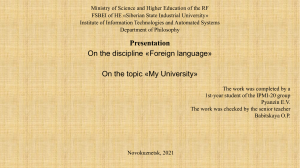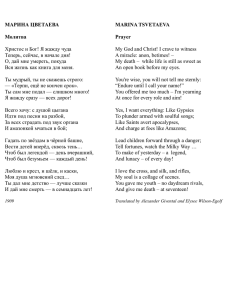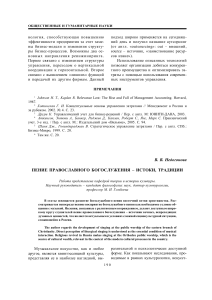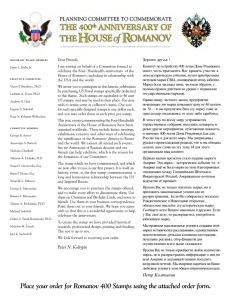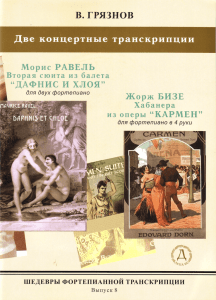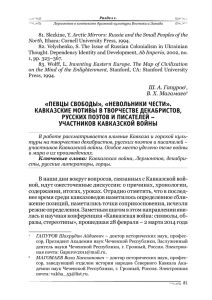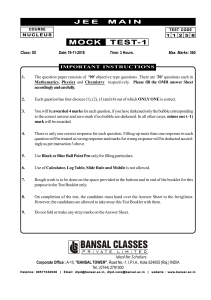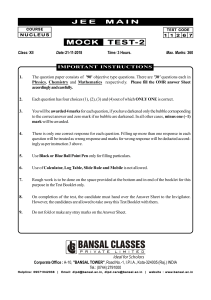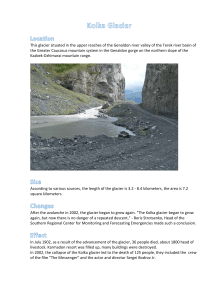автограф Центуриона
реклама
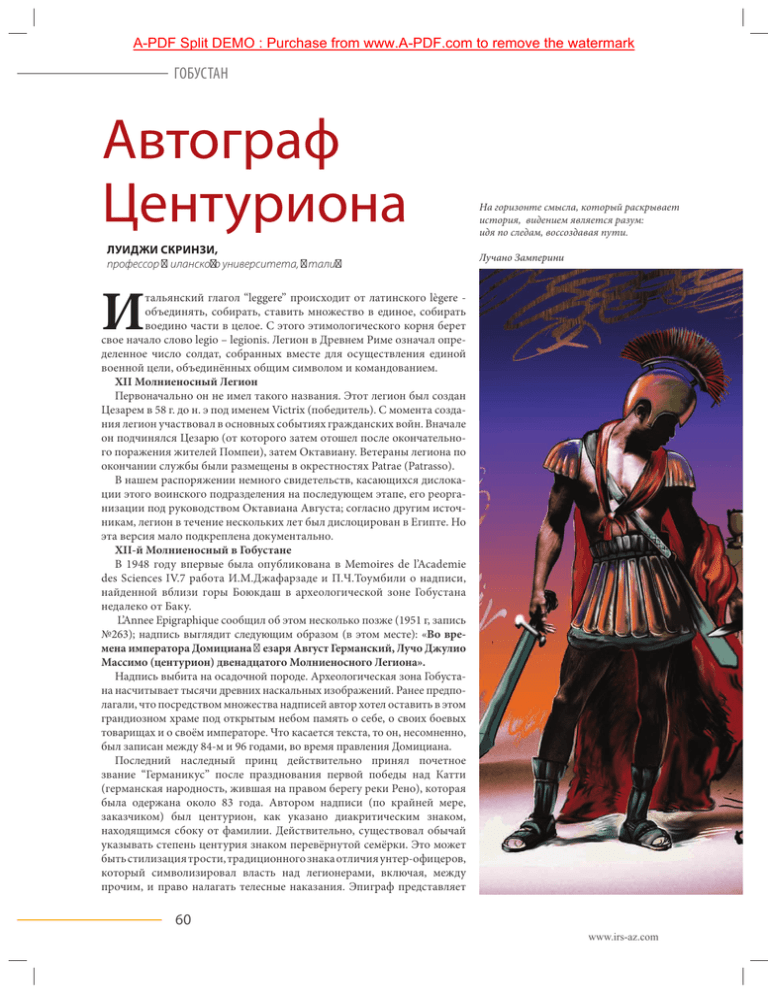
A-PDF Split DEMO : Purchase from www.A-PDF.com to remove the watermark ГОБУСТАН Автограф Центуриона ЛУИДЖИ СКРИНЗИ, профессор Миланского университета, Италия На горизонте смыслa, который раскрывает история, видением является разум: идя по следам, воссоздавая пути. Лучано Замперини И тальянский глагол “leggere” происходит от латинского lègere объединять, собирать, ставить множество в единое, собирать воедино части в целое. С этого этимологического корня берет свое начало слово legio – legionis. Легион в Древнем Риме означал определенное число солдат, собранных вместе для осуществления единой военной цели, объединённых общим символом и командованием. XII Молниеносный Легион Первоначально он не имел такого названия. Этот легион был создан Цезарем в 58 г. до н. э под именем Victrix (победитель). С момента создания легион участвовал в основных событиях гражданских войн. Вначале он подчинялся Цезарю (от которого затем отошел после окончательного поражения жителей Помпеи), затем Октавиану. Ветераны легиона по окончании службы были размещены в окрестностях Patraе (Patrasso). В нашем распоряжении немного свидетельств, касающихся дислокации этого воинского подразделения на последующем этапе, его реорганизации под руководством Октавиана Августа; согласно другим источникам, легион в течение нескольких лет был дислоцирован в Египте. Но эта версия мало подкреплена документально. XII-й Молниеносный в Гобустане В 1948 году впервые была опубликована в Memoires de l’Academie des Sciences IV.7 работа И.М.Джафарзаде и П.Ч.Тоумбили о надписи, найденной вблизи горы Боюкдаш в археологической зоне Гобустана недалеко от Баку. L’Annee Epigraphique сообщил об этом несколько позже (1951 г, запись №263); надпись выглядит следующим образом (в этом месте): «Во времена императора Домициана Цезаря Август Германский, Лучо Джулио Массимо (центурион) двенадцатого Молниеносного Легиона». Надпись выбита на осадочной породе. Археологическая зона Гобустана насчитывает тысячи древних наскальных изображений. Ранее предполагали, что посредством множества надписей автор хотел оставить в этом грандиозном храме под открытым небом память о себе, о своих боевых товарищах и о своём императоре. Что касается текста, то он, несомненно, был записан между 84-м и 96 годами, во время правления Домициана. Последний наследный принц действительно принял почетное звание “Германикус” после празднования первой победы над Катти (германская народность, жившая на правом берегу реки Рено), которая была одержана около 83 года. Автором надписи (по крайней мере, заказчиком) был центурион, как указано диакритическим знаком, находящимся сбоку от фамилии. Действительно, существовал обычай указывать степень центурия знаком перевёрнутой семёрки. Это может быть стилизация трости, традиционного знака отличия унтер-офицеров, который символизировал власть над легионерами, включая, между прочим, и право налагать телесные наказания. Эпиграф представляет 60 www.irs-az.com gOBUSTAN The signature of the centurion On the horizon of meaning, which is uncovered by history, the mind is the vision: tracing and reconstructing the paths. LUIGI SCRINZI Professor of Milano University, Italy Luciano Zamperini T he Italian verb “leggere” (to read) is derived from the Latin lègere, t. i. to join, to collect, to put together parts into a whole, in order to understand the meaning of the written words, made up of the signs (letters of the alphabet) that represent the different sounds of the human voice. The word legio - the legion - has the same etymological derivation, t. i. a good number of Roman soldiers, bound by a common symbol and a sole military intent. The Legio XII Fulminata (The Lightning Legion) Originally it was not called this. We know that Julius Caesar recruited it with the name of Victrix (‘winner’) in 58 BC and from then it took part in the main campaigns of the civil wars, first under Caesar’s command and then under Octavian’s. The unit was also present at the siege of Perugia (40-41 BC). The Legio XII Fulminata at Gobustan In 1948 I.M. Djapharzade and P.Ch. Toumbili published an inscription found at Böyükdaş mountain, in the archaeological area of Gobustan, near Baku for the first time, in the Mémoires de l’Académie des Sciences, IV, 7. Information about this was given a few years later (in 1951, inscription no. 263) in the Année Epigraphique. The text reads as follows: “At the time of Emperor Domitian Caesar Augustus Germanicus Lucius Julius Maximus (centurion) of the Legio XII Fulminata” The inscription is engraved on a sedimentary rock, from the depth of a sea which slowly receded in far-off times (the literal meaning of the word Gobustan: a site where waters have subsided; once the Caspian Sea was joined to the Black Sea). An extraordinarily beautiful geological area, full of thousands of ancient rock graffiti. We are tempted to think that, owing to the suggestion created by the enormous quantity of centuries-old inscriptions, the author of the Latin epigraph wanted to leave, in that sort of open-air sanctuary, a trace of him, of his legion, of the emperor ruling at the time. As for the text, it must have been carved between the years 84 and 96: Domitian’s name proves it. The last representative of the Flavian dynasty, in fact, adopted the name of Germanicus after his first victory against German populations in 83. The author of the inscription was a centurion, as shown by the diacritic beside the cognomen. It was usual, in fact, to indicate centurions’ rank with a sort of up-side-down 7, maybe a stylized vine-stick, a traditional element of the non commissioner officer’s equipment, a symbol of his authority over the legionaries. The epigraph is the most distant from Rome among the Latin ones known up to now. But it is not the only one found in Azerbaijan. An another document can be added to this one - if it really existed - an inscription found in outskirts of the Fizuli town along the Araz River, this one too mentioning the XII Fulminata: unfortunately the rock on which the text was engraved was lost before it was properly catalogued. The meaning of Roman presence in the Caucasus 61 ГОБУСТАН собой наиболее восточную, то есть наиболее далёкую от Рима из известных латинских надписей. Не исключено, что она не единственная на Кавказе. Согласно некоторым источникам, похожая надпись была в окрестностях г. Физули в Азербайджане; к сожалению, эта надпись не дошла до наших дней. Значение римского присутствия на Кавказе Император Нерон в последние годы своего правления запланировал поход на Южный Кавказ, отменённый из-за внезапного восстания Джулио Вендиче в Галлии Лугдуненсе. Кроме того, многочисленны выделенные отряды в Германии и Британии и Иллирии, которые ёщё Нерон отобрал и отправил к кавказским переходам для подготовки войны против албан. Мотивы этой кампании нам неизвестны. Но мы можем выдвинуть некоторые гипотезы относительно этих «врат Каспия»: из множества проходов через Главный Кавказский хребет лишь немногие пригодны для прохождения целой армии. Некоторые ученые связывают присутствие 12-го Молниеносного легиона на Кавказе с подготовкой к войне. Однако эта версия имеет недостаточную доказательную базу. Домициан, возможно, потерпел поражение именно в этом регионе. Таким образом, легион под командованием Л. Юлия Максима находился в Гобустане, возможно, с целью контроля другого стратегически важного пути - Дербентского прохода к северу от Баку. Эта узкая полоса суши между Каспийским морем и горами служила по сути единственным проходом с Южного на Северный Кавказ зимой. Колебания уровня моря расширяли эту полосу суши. Текущая реставрация: читать, объединить, собрать, понять, сохранить. Консервация скалы с латинской надписью центуриона 12-го Молниеносного легиона производится в силу ее непреходящей важности с точки зрения изучения истории не только Азербайджана, но и Римской империи. С поверхности камня с помощью дисстилированной воды удалены вредная микрофлора - мхи, лишайники, грибки, бактерии, а также соли, разъедающие камень. В настоящее время работы по консервации продолжаются. Они проводятся под руководством автора данной статьи сотрудниками заповедника. Консервация позволит достичь наилучшего прочтения данного палеографического документа и даст новый стимул для дальнейшего углубленного исследования Гобустана в геологическом, археологическом, историческом и других отношениях. 62 www.irs-az.com gOBUSTAN Emperor Nero, during the last years of his reign, planned a military campaign in the Caucasus area, failed because of the sudden explosion of Julius Vindice’s uprising in Gallia Lugdunense. Also Svetonius mentions this expedition under the name of Portae Caspiae. But we do not know the aim of this campaign. We can only make a few assumptions about the identification of these “Caspian gates”. Along the Caucasian range there were certainly many passes, but only a few of them were large enough to allow the passage of armies. In 75 Caesar Vespasianus Augustus contributes to reinforce the defence of a site of extraordinarily strategic importance by improving further the relations with the Caucasus population. It was clear that the Emperor’s intention was to expand and intensify Roman influence in the Caucasus as an offensive weapon against Roman enemies. The local population had control of the passes through the Caucasus and for some time the Romans took advantage of it. It is in this context that the Gobustan inscription should be interpreted. Only the scenario changes. We know very little about the Eastern policy of the last Flavian Emperor, Domitian, but we suppose it was more or less the same as his forerunners. A few scholars have therefore thought of a connection between the epigraphic data on the presence of the Legio XII Fulminata and preparation for war. It seems that Domitian had suffered a defeat just in that region. But Domitian was not used to embark on war enterprises himself without effective preparation. The legion of Lucius Julius Maximus was probably at Gobustan in or- der to defend another pass of fundamental importance in the Caucasian defensive system: the Derbent Pass, located to the North of Baku, which represented a forced passage for those who wanted to go across the Caucasus in Winter (tide retreat, in fact, widened this stretch of dry land). Pass control was included in the agreements between the Albanians and the Romans, who could in this way carry out an encirclement policy against hostile people. So the stationing of legions had always the purpose of defending the status quo between the Empire and the vassal states of the area, but also of bringing the unsettled Caucasian peoples back to reason. As for the journey made to arrive at Gobustan, we can suppose, that the legion of Lucius Julius Maximus had followed the flow of the Aras river from its base in Cappadocia until the confluence with the Kura, and then to the North with the Caspian Sea on the right. The restoration works Gobustan. Restoration of the rock with the Latin inscription of a centurion of the XII Legio Fulminata. Removal of the infesting micro flora: mosses, lichens, moulds, mushrooms and cyanobacteriums. The rock’s preservation, which is now carried out with assistance from the young staff of the Gobustan preserve - besides the advantages due to the removal of elements of deterioration and the conservative restoration of centuries-old alterations - will allow a better legibility of the paleo-epigraphic document. It will also encourage research and studies in the following fields: geological, archaeological, and historical museum, in view of the recognition it is due. 63
